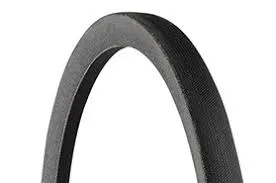- Arabic
- French
- Russian
- Spanish
- Portuguese
- Turkish
- Armenian
- English
- Albanian
- Amharic
- Azerbaijani
- Basque
- Belarusian
- Bengali
- Bosnian
- Bulgarian
- Catalan
- Cebuano
- Corsican
- Croatian
- Czech
- Danish
- Dutch
- Afrikaans
- Esperanto
- Estonian
- Finnish
- Frisian
- Galician
- Georgian
- German
- Greek
- Gujarati
- Haitian Creole
- hausa
- hawaiian
- Hebrew
- Hindi
- Miao
- Hungarian
- Icelandic
- igbo
- Indonesian
- irish
- Italian
- Japanese
- Javanese
- Kannada
- kazakh
- Khmer
- Rwandese
- Korean
- Kurdish
- Kyrgyz
- Lao
- Latin
- Latvian
- Lithuanian
- Luxembourgish
- Macedonian
- Malgashi
- Malay
- Malayalam
- Maltese
- Maori
- Marathi
- Mongolian
- Myanmar
- Nepali
- Norwegian
- Norwegian
- Occitan
- Pashto
- Persian
- Polish
- Punjabi
- Romanian
- Samoan
- Scottish Gaelic
- Serbian
- Sesotho
- Shona
- Sindhi
- Sinhala
- Slovak
- Slovenian
- Somali
- Sundanese
- Swahili
- Swedish
- Tagalog
- Tajik
- Tamil
- Tatar
- Telugu
- Thai
- Turkmen
- Ukrainian
- Urdu
- Uighur
- Uzbek
- Vietnamese
- Welsh
- Bantu
- Yiddish
- Yoruba
- Zulu
Nov . 06, 2024 08:52 Back to list
Belt versus Chain Drive in Motorcycles Analyzing Performance and Maintenance Differences
Belt vs. Chain Drive Motorcycles Understanding the Differences
When it comes to motorcycling, one of the most critical decisions a rider faces is the choice between a belt drive and a chain drive system. Each of these drivetrains comes with its own set of advantages and disadvantages, impacting performance, maintenance, and overall riding experience. In this article, we will explore the differences between belt and chain drive systems, helping you make an informed decision for your next motorcycle.
Chain Drive The Traditional Choice
Chain drive systems have been around for as long as motorcycles themselves. Characterized by a series of metal links that transfer power from the engine to the rear wheel through sprockets, chain drives are renowned for their durability and efficiency. Most sport bikes and off-road motorcycles utilize chain drives because they provide exceptional power transfer and can handle intense strain during acceleration and high-speed riding.
One significant advantage of chain drive systems is their ability to be easily adjusted. Riders can alter the chain's tension and can also change gear ratios by modifying the size of the sprockets. This flexibility allows for tailored performance, enabling riders to adapt their motorcycles for specific environments, whether it be racing on a track or navigating winding mountain roads.
However, chains do require regular maintenance. This includes lubrication and periodic adjustments to keep them in optimal condition. Additionally, chain drives can create more noise and vibration compared to belt drives, which may be a consideration for some riders.
Belt Drive The Smooth Operator
belt or chain drive motorcycle

On the other side of the spectrum, belt drive systems employ a rubber belt that rotates on pulleys to transfer power from the engine to the rear wheel. This setup is most commonly found on cruiser and touring motorcycles. The belt drive system is known for its smooth operation and quiet performance, making it an appealing choice for riders who prioritize comfort over high-performance handling.
One of the primary benefits of a belt drive is its low maintenance requirements. Unlike chains, belts do not need lubrication and are far less susceptible to rust and dirt. This can be especially attractive to riders who prefer a hassle-free ownership experience. Additionally, belt drives tend to provide a longer lifespan compared to chains, which can lead to lower replacement costs over time.
Despite these advantages, belt drives are not as customizable as chain drives. Riders looking for specific gearing needs may find themselves limited, as changing belt sizes and ratios is not as straightforward as swapping out sprockets on a chain. Additionally, while belts are strong, they can suffer from wear and tear if a motorcycle is regularly pushed to its limits, potentially leading to premature replacement.
Making the Right Choice
Ultimately, the decision between a belt drive and a chain drive comes down to personal preference and riding style. For riders who enjoy aggressive riding, track days, and off-road adventures, a chain drive may be the ideal choice due to its performance capabilities and adjustability. Conversely, those who prioritize comfort, low maintenance, and a smooth ride might find a belt drive to be the better option.
It is also worth considering the type of motorcycle you intend to ride. Cruisers and touring bikes often come equipped with belt drives, while sport bikes and adventure bikes typically feature chain drives. Understanding the intended use of a motorcycle can guide your choice between these two drivetrain options.
In conclusion, both belt and chain drive systems offer unique benefits and drawbacks that cater to different types of riders. Whether you lean towards the traditional ruggedness of a chain or the smooth convenience of a belt, your choice should align with your riding preferences and lifestyle. By understanding the differences between these drivetrains, you can choose a motorcycle that best fits your needs, ensuring a satisfying and enjoyable riding experience.
-
Upgrade Power Steering Pump Belt for Smooth, Quiet Operation
NewsAug.27,2025
-
Precision Timing Belt & Chain: Engine Performance & Durability
NewsAug.26,2025
-
Precision Lathe Drive Belts: Durable & Reliable Performance
NewsAug.25,2025
-
84.5 Serpentine Belt: Durable & Precision Fit for Your Engine
NewsAug.24,2025
-
Premium Ribbed Drive Belts for Quiet Power Transmission
NewsAug.23,2025
-
High-Performance Vehicle Timing Belt for Engine Precision
NewsAug.22,2025

